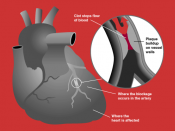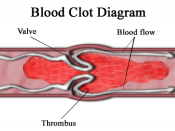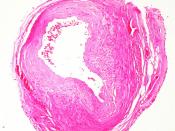What causes cardiovascular disease? Cardiovascular disease (CVD) remains the number one killer in North America. These diseases--such as heart attack, stroke, angina pectoris, arteriosclerosis and arteriosclerosis, and high blood pressure--and their risk factors are so interrelated that it is very difficult to say "where it all begins." One place to look when sorting this out is with arteriosclerosis.
ArteriosclerosisArteriosclerosis is the buildup of plaque in the arteries. It develops slowly, with soft, fatty streaks gradually accumulating along the inner walls of the arteries, especially where they branch. With time, the streaks grow larger and start hardening into plaque.
The danger is that plaque can lead to aneurysms and blood clots, and clots in turn can result in thrombosis, heart attack, and stroke.
An aneurysm occurs when the wall of a blood vessel weakens and balloons out. Like a balloon, the aneurysm can eventually burst. If this happens in a major artery, such as the aorta, it can lead to massive bleeding and death.
Arteriosclerosis can also upset the delicate balance of blood clots. Clots continually form and dissolve in our bloodstream, and it is important that this balance be kept. Clots form when blood platelets encounter an injury. Because the body considers plaque buildup an injury, platelets rush to the scene and begin the clotting process. The formed clot may remain attached to the plaque and continue growing. A clot that grows to the point that it obstructs a blood vessel is called a thrombus. It can shut off the blood supply to some body tissues. If this occurs in a blood vessel that feeds the heart, it is called a coronary thrombosis. If it occurs in an artery in the brain, killing brain tissue, it is called a cerebral thrombosis.
A clot can also break loose...


